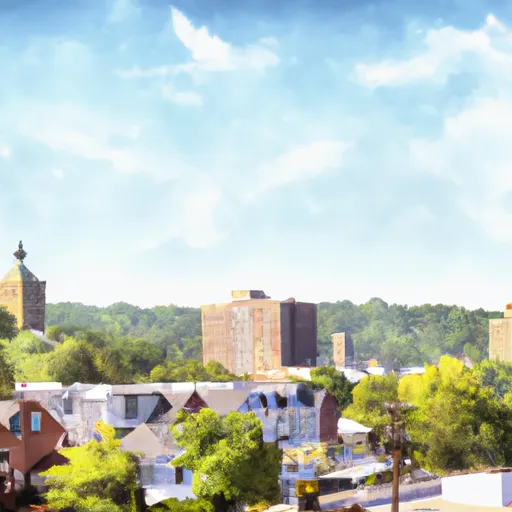-
 Snoflo Premium
Snoflo Premium
Get unlimited access to all our content
With no Ad interruptions! - Start Your Free Trial Login with existing account
Shady-Side
Eden Index
Climate
8.3
•
Recreation
4.2
•
Community
3.3
•
Safeguard
5.6/10

Shady-Side, Maryland is a picturesque waterfront community located in Anne Arundel County, on the western shore of the Chesapeake Bay. The town experiences a humid subtropical climate, characterized by hot and humid summers and cool winters. Average temperatures range from the mid-30s°F (2°C) in winter to the mid-80s°F (29°C) in summer, with moderate rainfall throughout the year.
Hydrologically, Shady-Side benefits from its proximity to the Chesapeake Bay, providing abundant recreational opportunities. The town is surrounded by water, with the West River to the south and the Rhode River to the north. Boating, fishing, and kayaking are popular activities, allowing residents and visitors to explore the bay's stunning estuaries, coves, and marshes. The area is also known for its diverse wildlife, including osprey, eagles, and various fish species.
Furthermore, Shady-Side boasts several outdoor recreation opportunities. The Shady-Side Park offers a peaceful environment for picnicking, sports, and walking trails, while the Captain Salem Avery House Museum provides historical insights. For those seeking a more immersive experience, there are numerous marinas and boat ramps, allowing easy access to the Chesapeake Bay and its countless islands and beaches.
In conclusion, Shady-Side, Maryland, offers a charming coastal community with a favorable climate, rich hydrology constituents, and an array of outdoor recreation opportunities centered around the picturesque Chesapeake Bay.
What is the Eden Index?
The Snoflo Eden Index serves as a comprehensive rating system for regions, evaluating their desirability through a holistic assessment of climate health, outdoor recreation opportunities, and natural disaster risk, acknowledging the profound impact of these factors on livability and well-being.
Climate Health Indicator (CHI): 8.3
Shady-Side receives approximately
1150mm of rain per year,
with humidity levels near 80%
and air temperatures averaging around
14°C.
Shady-Side has a plant hardyness factor of
7, meaning
plants and agriculture in this region tend to thrive during the non-winter months.
By considering the ideal temperature range, reliable water supplies, clean air, and stable seasonal rain or snowpacks, the Climate Health Indicator (CHI) underscores the significance of a healthy climate as the foundation for quality living.
A healthy climate is paramount for ensuring a high quality of life and livability in a region, fostering both physical well-being and environmental harmony. This can be characterized by ideal temperatures, reliable access to water supplies, clean air, and consistent seasonal rain or snowpacks.
Weather Forecast
Streamflow Conditions
Upper Chesapeake
Area Rivers
Upper Chesapeake
Snowpack Depths
Upper Chesapeake
Reservoir Storage Capacity
Upper Chesapeake
Groundwater Levels
Recreational Opportunity Index (ROI): 4.2
The Recreational Opportunity Index (ROI) recognizes the value of outdoor recreational options, such as parks, hiking trails, camping sites, and fishing spots, while acknowledging that climate plays a pivotal role in ensuring the comfort and consistency of these experiences.
Access to outdoor recreational opportunities, encompassing activities such as parks, hiking, camping, and fishing, is crucial for overall well-being, and the climate plays a pivotal role in enabling and enhancing these experiences, ensuring that individuals can engage in nature-based activities comfortably and consistently.
Camping Areas
| Campground | Campsites | Reservations | Toilets | Showers | Elevation |
|---|---|---|---|---|---|
| Point Lookout State Park | 143 | 2 ft |
Nearby Ski Areas
Catastrophe Safeguard Index (CSI):
The Catastrophe Safeguard Index (CSI) recognizes that natural disaster risk, encompassing floods, fires, hurricanes, and tornadoes, can drastically affect safety and the overall appeal of an area.
The level of natural disaster risk in a region significantly affects safety and the overall livability, with climate change amplifying these risks by potentially increasing the frequency and intensity of events like floods, fires, hurricanes, and tornadoes, thereby posing substantial challenges to community resilience and well-being.
Community Resilience Indicator (CRI): 3.3
The Community Resilience Indicator (CRI) recognizes that education, healthcare, and socioeconomics are crucial to the well-being of a region. The CRI acknowledges the profound impact of these elements on residents' overall quality of life. By evaluating educational resources, healthcare accessibility, and economic inclusivity, the index captures the essential aspects that contribute to a thriving community, fostering resident satisfaction, equity, and social cohesion.

